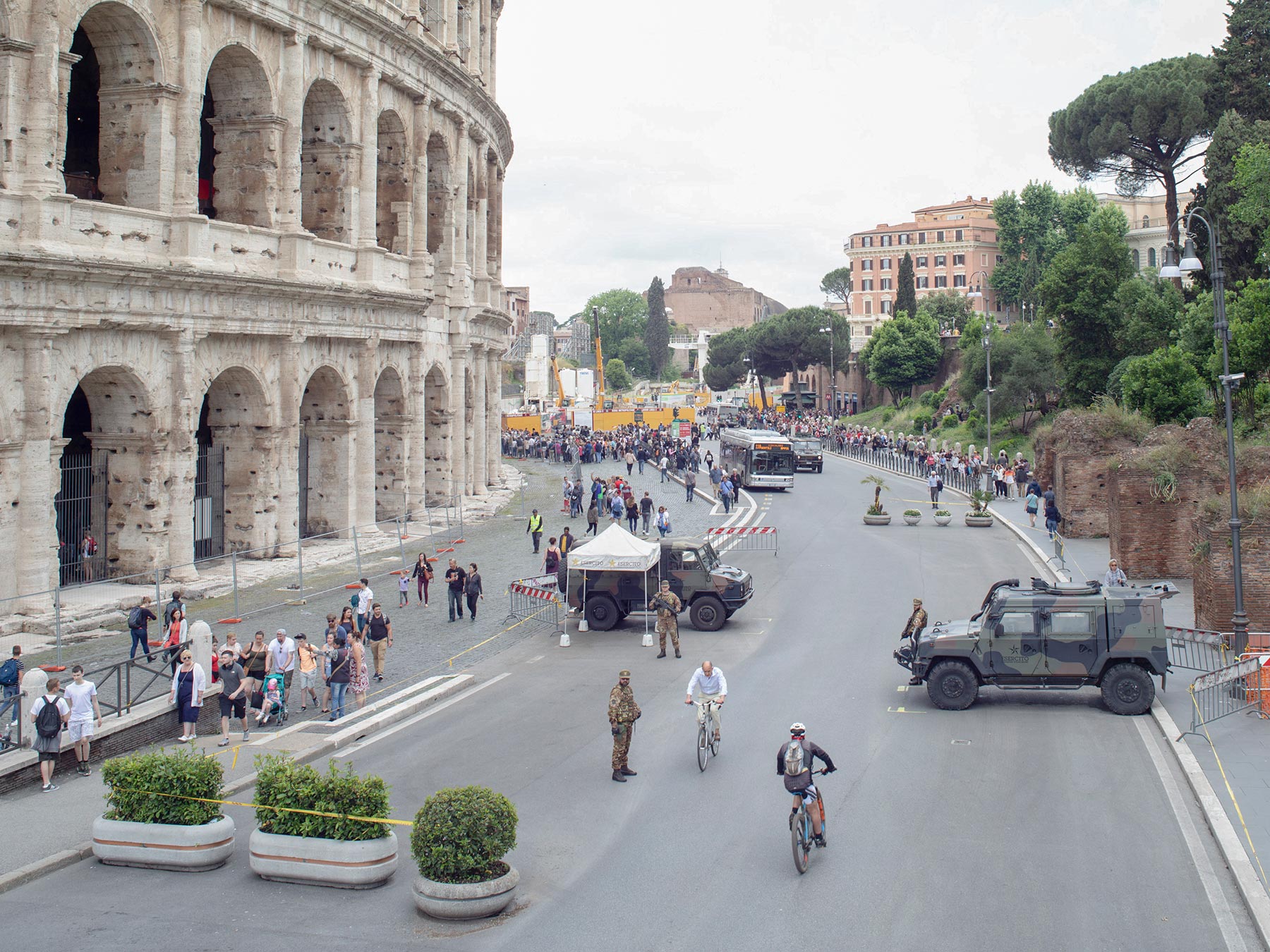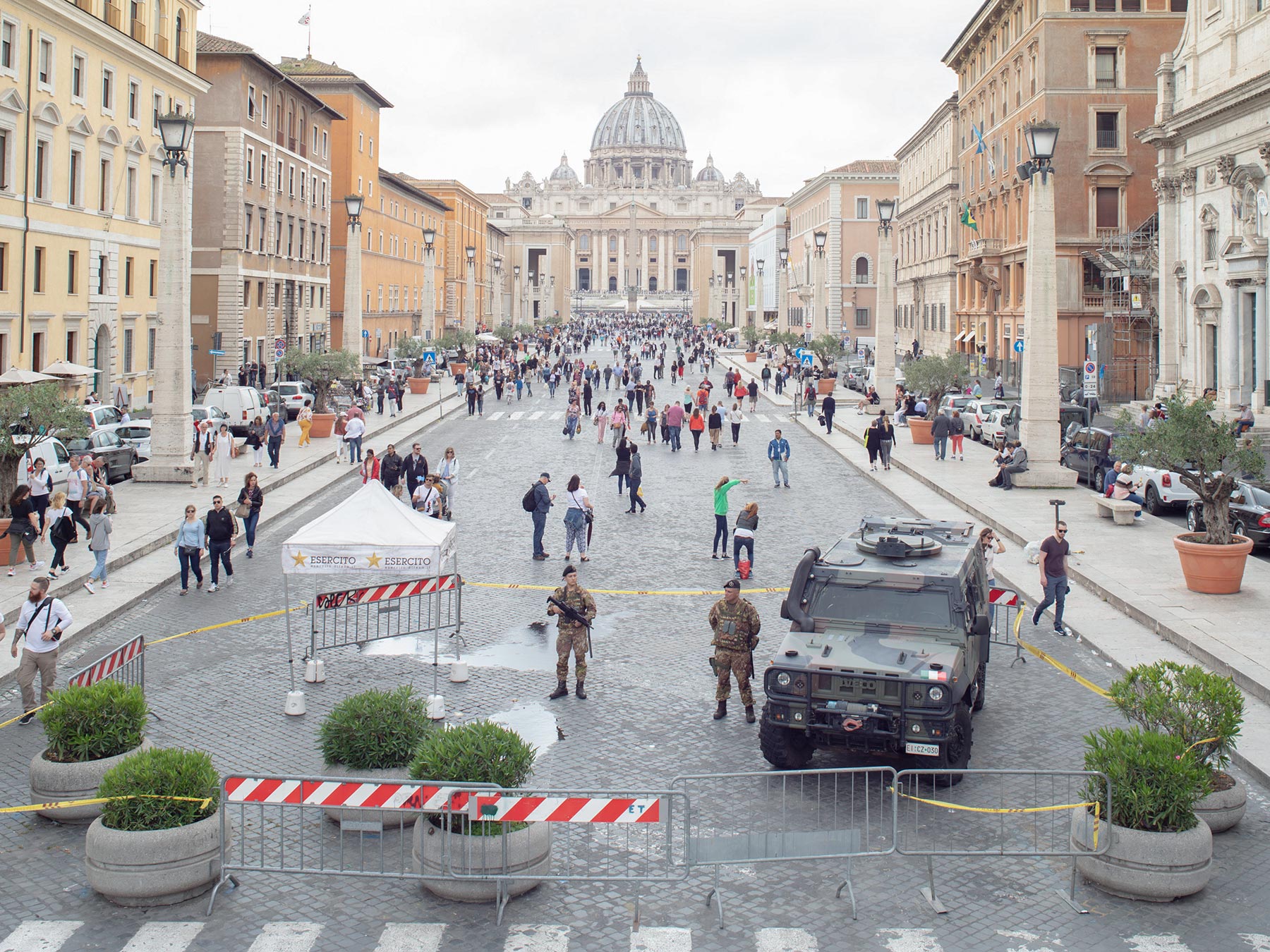Florence, Piazza del Duomo, March 2019
Landscape is both personal and collective—a reflection of cultural identity, shaped by human perception and interaction. It is not a fixed entity but a living, evolving space that adapts to societal changes, fears, and values. In an era of heightened security concerns, public spaces across Europe are being reshaped by visible and invisible barriers, from surveillance systems and protective structures to restricted access zones. These transformations, often implemented in response to perceived threats, redefine the way we experience and navigate urban environments.
This project examines how contemporary fears influence the design and function of public spaces in European cities—places that, paradoxically, are statistically safer than ever. As concrete blocks, fences, cameras, and other security measures become ingrained in the urban fabric, what story does this evolving landscape tell? How do these interventions shape our collective memory and sense of place? And what legacy will they leave for future generations?
The work was produced in collaboration with the University of Siena as part of the BeSEC Project, funded by the European Commission under the Jean Monnet Actions. This initiative fosters a deeper understanding of security’s role in European integration, encouraging reflection on the balance between protection and the preservation of open, accessible public spaces.












